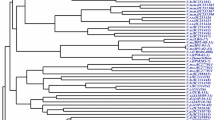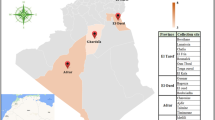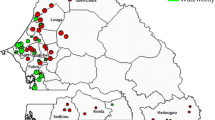Abstract.
The genetic structure of five natural populations of common wild rice Oryza rufipogon Griff. from China, was investigated with 21 microsatellite loci and compared to estimates of genetic diversity and genetic differentiation detected by 22 allozyme loci. Microsatellite loci, as expected, have much higher levels of genetic diversity (mean values of A = 3.1, P = 73.3%, Ho = 0.358 and He = 0.345) than allozyme loci (mean values of A = 1.2, P = 12.7%, Ho = 0.020 and He = 0.030). Genetic differentiation detected by microsatellite loci (F ST = 0.468, mean I = 0.472) was higher than that for allozyme loci (F ST =0.388, mean I = 0.976). However, microsatellite markers showed less deviation from Hardy-Weinberg expectation (Wright's inbreeding coefficient F IS = –0.069) than do allozymes (F IS = 0.337). These results suggest that microsatellite markers are powerful high-resolution tools for the accurate assessment of important parameters in population biology and conservation genetics of O. rufipogon, and offer advantages over allozyme markers.
Similar content being viewed by others
Author information
Authors and Affiliations
Additional information
Electronic Publication
Rights and permissions
About this article
Cite this article
Gao, .Lz., Schaal, .B., Zhang, .Ch. et al. Assessment of population genetic structure in common wild rice Oryza rufipogon Griff. using microsatellite and allozyme markers. Theor Appl Genet 106, 173–180 (2002). https://doi.org/10.1007/s00122-002-1027-9
Received:
Accepted:
Issue Date:
DOI: https://doi.org/10.1007/s00122-002-1027-9




